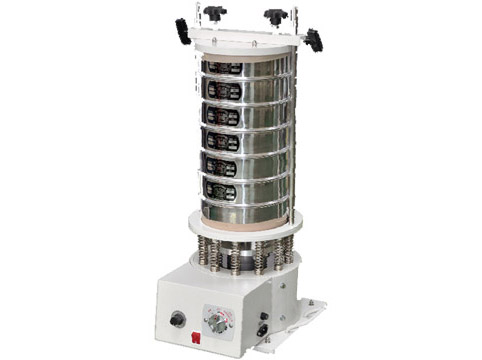Sieve shakers are essential instruments in laboratories, facilitating the separation of particles based on their sizes. Employed in various fields, these devices streamline the particle analysis process, ensuring precision and reliability.
Laboratory professionals rely on sieve shakers for tasks ranging from quality assurance to research and development. The ability to accurately determine particle sizes is fundamental in fields such as pharmaceuticals, food and beverage, and construction materials.
How Sieve Shakers Work
A. Basic Principles
Sieve shakers operate on the principle of mechanical agitation, causing particles to pass through mesh screens. The amplitude and frequency of the vibrations significantly impact the efficiency of particle separation.
B. Mesh Sizes and Particle Separation
The choice of mesh size in the sieve are important in determining the range of particle sizes that can be effectively separated. Understanding the characteristics of the sample is vital for accurate analysis.
- Preparation of Sample:
- Before using, a representative sample is prepared by collecting material from the larger bulk. The sample size should be appropriate for the analysis, and it is often necessary to reduce larger particles to a size suitable for testing.
- Selection of Sieves:
- Sieves are chosen based on the desired particle size analysis. Sieve sets typically consist of a stack with progressively smaller openings. The top sieve has the largest openings, and the bottom sieve has the smallest.
- Loading the Sieves:
- The prepared sample is placed on the top sieve of the stack. The stack is then assembled with the sieves arranged in order of decreasing mesh size from top to bottom. A pan is often placed at the bottom to collect the fines that pass through the smallest.
- Securing the Stack:
- The sieves are securely clamped together to form a rigid stack. This ensures that the sieves remain in their relative positions during the shaking process.
- Shaking Mechanism:
- Sieve shakers use mechanical or electromagnetic mechanisms to induce motion. Mechanical typically employ an oscillating or tapping motion, while electromagnetic shakers generate a vibratory motion. The shaking action causes the particles to move and pass through the openings in the sieves.
- Separation of Particles:
- As the sample is subjected to the shaking motion, particles are separated based on their size. Larger particles are retained on the top sieves, while smaller particles pass through the openings and collect on the lower or in the pan.
- Analysis and Results:
- After a specified duration of shaking, the sieves are carefully disassembled, and the amount of material retained on each sieve is measured. This information is used to determine the particle size distribution of the sample.
Choosing the Right Sieve Shaker
A. Consideration of Sample Characteristics
Different samples require different sieve shakers. Factors such as particle size, shape, and material composition influence the choice of the appropriate sieve shaker.
B. Frequency and Amplitude Settings
Adjusting the frequency and amplitude of the sieve shaker is essential for achieving optimal results. Fine-tuning these settings ensures efficient particle separation without damaging delicate specimens.
Importance of Sieve Shakers in Research
A. Quality Assurance in Particle Analysis
Sieve shakers are important in quality assurance by providing accurate and repeatable particle size distributions. This is particularly crucial in industries where product quality is of utmost importance.
B. Accelerating the Testing Process
Manual sieving can be time-consuming and prone to human error. Sieve shakers significantly accelerate the testing process, allowing laboratories to handle a higher volume of samples with increased efficiency.
C. Ensuring Repeatability
The precision ensures that experiments and tests are repeatable, contributing to the reliability of research outcomes. Consistent results are vital for building a foundation of trust in laboratory practices.
Uses of SIEVE SHAKERS
Sieve shakers are devices used in laboratories for particle size analysis. They are commonly employed in various industries, including pharmaceuticals, food processing, agriculture, construction, and environmental testing. Here are some of the key uses of sieve shakers:
- Particle Size Analysis:
- Used for determining the particle size distribution of granular and powdered materials. This information is crucial in industries where the size of particles can affect product quality and performance.
- Quality Control in Manufacturing:
- Industries such as pharmaceuticals, food, and construction use Them to ensure that the raw materials and finished products meet specific particle size specifications. This is essential for maintaining product quality and consistency.
- Research and Development:
- Used to study the characteristics of various materials. Understanding particle size distribution can be important in fields such as material science, geology, and chemistry.
- Soil Analysis:
- They are commonly employed in soil testing laboratories to determine the distribution of particle sizes in soil samples. This information is valuable for assessing soil fertility, drainage, and other properties.
- Environmental Monitoring:
- Environmental testing by analyzing particles in air and water samples. Monitoring particle size distribution is crucial for assessing pollution levels and understanding environmental impact.
- Aggregate Testing:
- Construction industries use them to analyze aggregates used in concrete and asphalt production. Ensuring the proper gradation of aggregates is essential for the structural integrity of construction materials.
- Pharmaceutical Formulation:
- In the pharmaceutical industry, they help ensure that the particles in drug formulations are within the desired size range. This is critical for drug effectiveness and absorption.
- Food Processing:
- Food industries use them to analyze and control the particle size of ingredients such as flour, sugar, and other powders. This is important for achieving consistency in food products.
- Powder Metallurgy:
- Used in the field of powder metallurgy to analyze and control the particle size of metal powders used in the production of metal parts.
- Cement Industry:
- Sieve shakers are employed in the cement industry to analyze the fineness of cement particles. This can impact the setting time and strength of the final concrete product.
